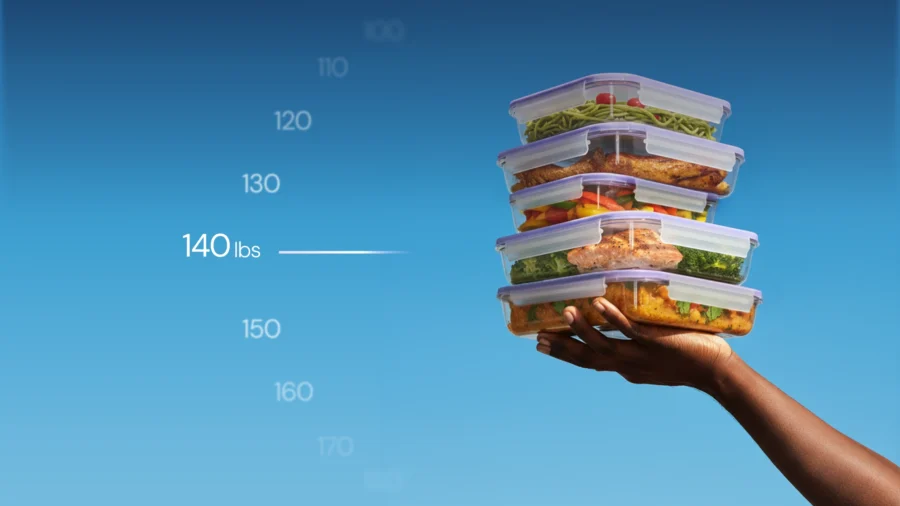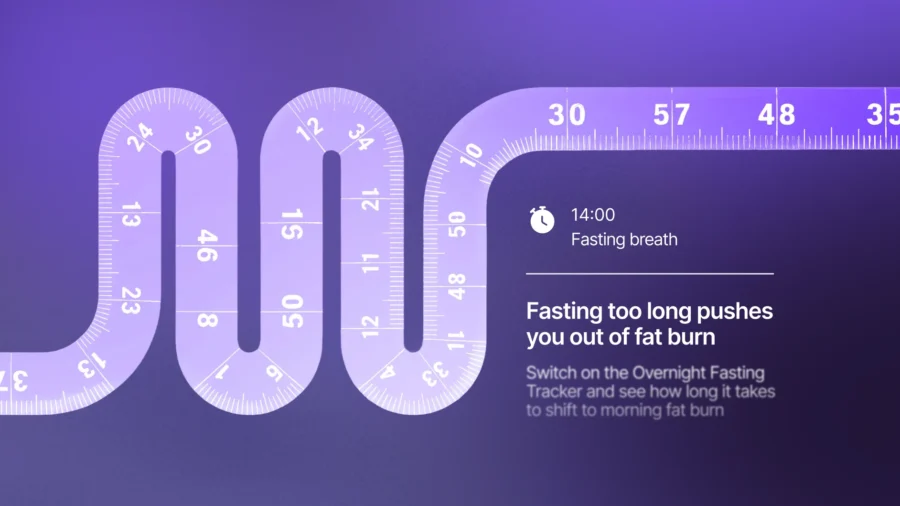How metabolic flexibility can boost your weightlifting endurance

Find out what’s happening in your body in real time to maximize your gains at the gym
Imagine if the key to significantly boosting your weightlifting performance wasn’t found in the weight room but in understanding and optimizing a hidden aspect of your health. Yes, your form, technique, and posture play a major role in enhancing the effectiveness of your weight training and in injury prevention. However, there’s an equally critical, yet often overlooked, factor that can dramatically improve your endurance and muscle mass growth: your metabolic flexibility.
Understanding mitochondrial health and metabolic flexibility
Mitochondria, also known as the powerhouses of our cells, turn the food we eat into the energy that powers us through the day. Metabolic flexibility refers to how easily your mitochondria can switch back and forth between burning carbs and fat for energy1. Mitochondrial health plays an essential role in metabolic flexibility2, and your mitochondria interact closely with the enzymes that regulate the body’s metabolic pathways.
Metabolic flexibility is important because it gives you enough energy at the right time to support your activities. For example, when you do something vigorous like weightlifting, your body needs to burn carbs to keep up1.
You can boost your metabolic flexibility through various lifestyle factors, such as tracking your macros, planning your pre- and post-workout meals, adjusting your fasting window, and implementing stress management techniques.
Why metabolic health matters for weightlifting
The connection between weightlifting and metabolic health isn’t a one-directional relationship.
According to research, exercise can improve mitochondrial efficiency by increasing mitochondrial reproduction. Exercise can also help reduce mitochondrial dysfunction3. Moreover, muscles are filled with mitochondria and are a primary site for glycogen, the storage form of carbohydrates your body doesn’t use immediately. So, the more muscle you gain, the more mitochondria you’ll have. It also means more energy, more effective fat metabolism, and increased glycogen storage, ensuring less glucose will be stored as fat when consuming carbs.
Studies suggest that resistance training can enhance metabolic health by enhancing insulin sensitivity, reducing body fat, and improving blood pressure and cholesterol levels4. Additionally, research has established the importance of fuel availability in improving endurance and reducing fatigue5. In other words, boosting your metabolic flexibility to shift to carb burn when needed could help you lift heavier weights and build more muscle.
How to improve metabolic flexibility, mitochondrial function, and weightlifting endurance
You can optimize your weightlifting endurance by managing your lifestyle in several ways — from tracking your macros and carb cycling to finding your ideal pre- and post-workout fuel and fasting window.

Track your macros
A balanced diet typically consists of 50-60% carbohydrates, 30-40% fats, and 20-30% protein6. However, these percentages may change daily depending on your activities, and what’s optimal can look different for everyone. Weightlifters, for example, typically consume more protein to enhance their results.
Macronutrient balance and meal timing are essential for regulating glycogen. Low glycogen makes us feel tired and sluggish. When the body needs extra energy that it can’t get from glycogen stores, it breaks down muscle into carbs for your mitochondria to use as fuel.
On the other hand, consuming more carbs than our activities require can cause an overload because glycogen stores are limited in size. Our mitochondria’s effort to handle all this glucose creates oxidative stress, which hurts mitochondrial health. Consistently high glycogen levels can also make the mitochondria over-reliant on carbs and reduce their ability to use fat efficiently.

Cycle your carbohydrate intake
In a 7-week study, researchers found that taking a break from a low-calorie diet and eating more carbs for 2 days in a row was more effective in preventing muscle loss than sticking to a low-calorie diet all the time. This technique also helped maintain the participants’ resting metabolic rates7.
If your goal is to improve body composition, you can alternate between energy balance and deficit to boost muscle growth and fat loss. So, how does this look? On weight training days, you can push into energy balance with high protein and high carbs. On every other day of the week, you might opt for an energy deficit by consuming less carbs or fats. By cycling your calories this way, you can maximize muscle growth and still achieve your fat loss goals.

Plan your pre- and post-workout meals
For high-intensity workouts, your mitochondria require carbs as fuel. If carbs aren’t available, your body will break down muscle into carbs for energy.
It’s important to understand the state your body is in when planning a pre-workout snack. Many weightlifters use metabolic trackers to understand their pre-workout state and eat (or not) accordingly. If you’re burning carbs before your workout, this can indicate full glycogen stores and enough energy for a high-intensity workout. If you’re in fat-burn mode, your glycogen stores might be empty, and you should eat a high-carb snack before weightlifting to prevent muscle breakdown. Opt for nutrient-rich snacks like Greek yogurt with honey or a banana with peanut butter before your workout.
After a high-intensity workout, your body will likely still be burning through carbs so you should refuel adequately. Eat a mix of protein and carbs post-workout, such as a whey protein shake with a piece of fruit or a chicken salad with sweet potato. Consuming these snacks within three hours post-exercise can also help stimulate muscle growth8.
“Before you work out, it’s important to make sure you have enough available energy in the form of carbs so you can perform at your best. Carbs improve performance by providing a rapid source of energy to muscles. This delays fatigue and also allows you to perform at higher levels for longer.”
Don Saladino, Celebrity Fitness Trainer
Mind your fasting window
Intermittent fasting is a powerful tool, and many weightlifters use it to improve body composition. Done right, it can trigger mitochondrial reproduction and improve fat-burn efficiency.
It all comes back to glycogen, your body’s reserve carb storage. When your fasting window is just long enough, your body will tap into your glycogen and fat stores for energy. However, fasting for too long will cause your glycogen stores to get critically low, leading your body to break down muscle for energy.
When weightlifting and aiming to improve body composition, it’s crucial to have an inside look at your metabolism and know what’s happening in your body in real time. When your body shifts to fat burn, it signifies a successful fast. When your body shifts to carb burn after prolonged fasting, your body might be entering a state of stress — indicating you passed your fasting sweet spot.
To ensure your fasting is supporting your weightlifting goals, be sure to, break your fast at the optimal time and fuel appropriately beforehand.

Boost recovery and weightlifting endurance through proper sleep
Studies suggest that sleep plays an essential role in improving metabolic health and promoting muscle recovery, especially after a weightlifting session910. Waking up in fat burn indicates your mitochondria are efficient since fat is the ideal fuel during rest and fasting.
These are some starting points to help you wake up in fat burn and optimize your metabolism:
- Avoid caffeine after 2 pm
- Don’t eat heavy meals before bedtime
- Stick to a regular sleep routine and avoid long naps in the afternoon
- Ensure your bedroom is dark and cool. Sleeping at the right temperature for each sleep stage increases time spent in deep and REM sleep
- Give yourself an hour of device-free time before bed
A good night’s sleep synced to your circadian rhythm gives your mitochondria time for maintenance, repair, and reproduction to produce the energy you need. This also helps with sufficient recovery time after workouts to avoid injury and provides more energy to build weightlifting endurance.
Manage your stress for better metabolic health
While short-term spikes in the stress hormone cortisol are normal and healthy, chronically elevated cortisol overworks the mitochondria, damages their membranes, and reduces their lifespan. Chronically elevated cortisol also signals the mitochondria to burn carbs, which causes them to be overdependent on carbs to produce energy and makes them forget how to burn fat over time.
Stress management is a key aspect of attaining peak metabolic flexibility. Researchers have found that long-term stress can lead to overconsumption of foods, increased belly fat, and greater weight gain. Additionally, chronic stress is linked to a higher risk of metabolic diseases11.
Mindfulness and stress-relieving activities, like long walks, yoga, and meditation, can help manage your stress. You can also try deep breathing techniques or journaling to reduce stress.
Support your weightlifting goals with metabolic tracking
Lumen, the world’s first device-to-app metabolic health coach, measures your metabolism through your breath to give you real-time insights into how your nutrition, sleep, exercise, and stress levels impact your body’s engine.
With Lumen, you can enhance your fitness performance through tailored metabolic coaching that helps you understand what’s happening in your body in real time. The device gives you insights about your metabolic health daily — whether at baseline in the morning or around your workouts.
Based on how you’re doing on a given day, Lumen guides you to make smarter nutrition, exercise, sleep, and stress management decisions to improve your metabolic flexibility and, through it, your weightlifting endurance.







 Digital download
Digital download 


